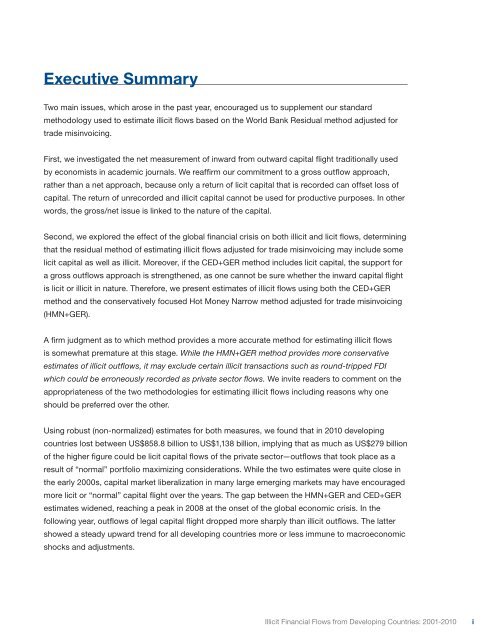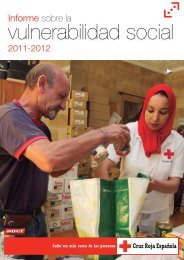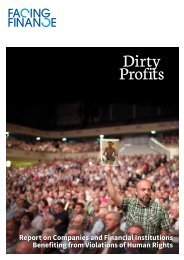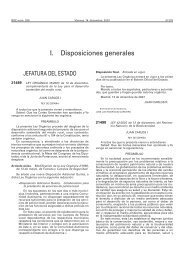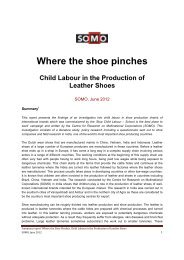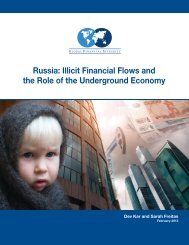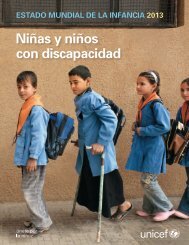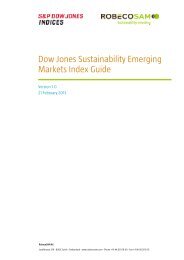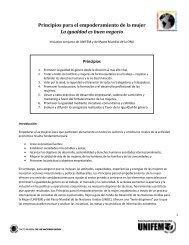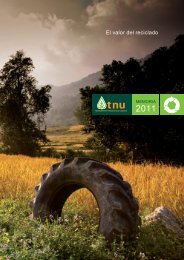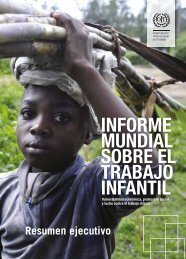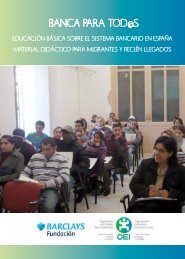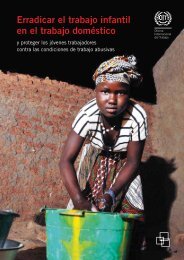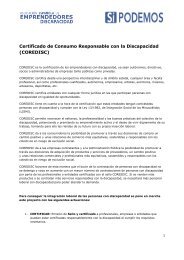Illicit Financial Flows from Developing Countries ... - culturaRSC.com
Illicit Financial Flows from Developing Countries ... - culturaRSC.com
Illicit Financial Flows from Developing Countries ... - culturaRSC.com
- No tags were found...
You also want an ePaper? Increase the reach of your titles
YUMPU automatically turns print PDFs into web optimized ePapers that Google loves.
Executive SummaryTwo main issues, which arose in the past year, encouraged us to supplement our standardmethodology used to estimate illicit flows based on the World Bank Residual method adjusted fortrade misinvoicing.First, we investigated the net measurement of inward <strong>from</strong> outward capital flight traditionally usedby economists in academic journals. We reaffirm our <strong>com</strong>mitment to a gross outflow approach,rather than a net approach, because only a return of licit capital that is recorded can offset loss ofcapital. The return of unrecorded and illicit capital cannot be used for productive purposes. In otherwords, the gross/net issue is linked to the nature of the capital.Second, we explored the effect of the global financial crisis on both illicit and licit flows, determiningthat the residual method of estimating illicit flows adjusted for trade misinvoicing may include somelicit capital as well as illicit. Moreover, if the CED+GER method includes licit capital, the support fora gross outflows approach is strengthened, as one cannot be sure whether the inward capital flightis licit or illicit in nature. Therefore, we present estimates of illicit flows using both the CED+GERmethod and the conservatively focused Hot Money Narrow method adjusted for trade misinvoicing(HMN+GER).A firm judgment as to which method provides a more accurate method for estimating illicit flowsis somewhat premature at this stage. While the HMN+GER method provides more conservativeestimates of illicit outflows, it may exclude certain illicit transactions such as round-tripped FDIwhich could be erroneously recorded as private sector flows. We invite readers to <strong>com</strong>ment on theappropriateness of the two methodologies for estimating illicit flows including reasons why oneshould be preferred over the other.Using robust (non-normalized) estimates for both measures, we found that in 2010 developingcountries lost between US$858.8 billion to US$1,138 billion, implying that as much as US$279 billionof the higher figure could be licit capital flows of the private sector—outflows that took place as aresult of “normal” portfolio maximizing considerations. While the two estimates were quite close inthe early 2000s, capital market liberalization in many large emerging markets may have encouragedmore licit or “normal” capital flight over the years. The gap between the HMN+GER and CED+GERestimates widened, reaching a peak in 2008 at the onset of the global economic crisis. In thefollowing year, outflows of legal capital flight dropped more sharply than illicit outflows. The lattershowed a steady upward trend for all developing countries more or less immune to macroeconomicshocks and adjustments.<strong>Illicit</strong> <strong>Financial</strong> <strong>Flows</strong> <strong>from</strong> <strong>Developing</strong> <strong>Countries</strong>: 2001-2010i


